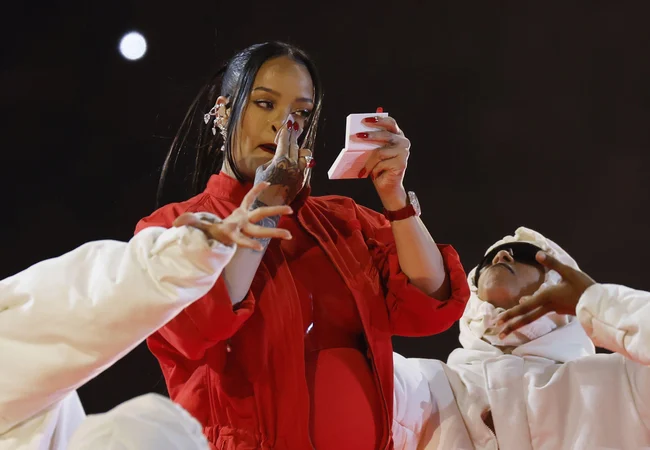
Beyond Advertising: The Case for a PR-First Approach
I often refer to myself as an Ad Man. I entered this business as a copywriter, and I have penned thousands of ads and commercials. It’s fair to say that I love advertising. Always have; always will. But now that the business has evolved, it’s time to take stock.
Historically, businesses have gravitated toward an advertising-first strategy, placing their bets on paid media to communicate their messages and sell products. This method, deeply rooted in the 20th-century marketing landscape when my career began, prioritizes direct and often aggressive promotional tactics to capture consumer attention.
However, as the digital revolution reshapes how audiences interact with brands, a more nuanced, sophisticated and engaging strategy is emerging: the PR-First approach.
The traditional advertising-centric approach, with its straightforward and often interruptive messaging, is increasingly seen as outmoded in a world where consumers are bombarded with information and have become adept at tuning out noise and relying more on social endorsement.
In contrast, a PR-First approach prioritizes building relationships, credibility and trust with the audience before anything else. It leverages the power of storytelling, thought leadership and community engagement to create a positive brand image and forge a strong emotional connection with the audience. This strategy doesn’t just aim to sell, but to inspire, engage and cultivate loyalty.
However, this approach isn’t just about choosing PR over advertising; it’s about understanding the importance of using PR as the new hub around which we integrate various disciplines such as content marketing, digital, experiential, social media, influencers, as well as advertising to architect a cohesive, strategic communication plan. The modern use of Paid, Earned, Shared and Owned (“PESO”) communications channels recognizes that each discipline brings unique strengths to the table, and when used together, they can create a more compelling and effective narrative via a robust, dynamic, and successful marketing strategy.
The Limitations of an Advertising-Centric Approach
Advertising has long been the cornerstone of commercial promotion, dating back to ancient civilizations where merchants would shout their wares in the marketplace. With the advent of print, radio, and television, advertising evolved into a more sophisticated and widespread means of communication. In the 20th century, the advertising-centric approach became the gold standard for businesses seeking to influence consumer behavior. This era witnessed the rise of iconic campaigns and the establishment of advertising as a dominant force in shaping consumer culture. The strategy was straightforward: use mass media to broadcast your message to as large an audience as possible, maximizing reach and frequency to drive sales. Those were good times.
However, the digital age has radically transformed the media landscape. With the proliferation of digital platforms and the fragmentation of media channels, consumers are no longer passive recipients of advertising messages. They are now empowered with the ability to choose what content they engage with, leading to a significant decline in the effectiveness of traditional advertising methods. The challenges of the digital age include:
• Ad Saturation: Consumers are bombarded with thousands of ads daily, leading to ad fatigue and a tendency to ignore or block intrusive advertising.
• Changing Consumer Behavior: The rise of ad-free streaming services, the use of ad blockers, and the shift towards content consumption on social media have diminished the reach of traditional advertising.
• Demand for Authenticity: Today’s consumers are more discerning and value authenticity and personalization. They prefer brands that offer more than just a product or service; they seek a genuine connection and meaningful experiences.
• Difficulty in Measuring Impact: In the complex web of digital touchpoints, tracking the direct impact of traditional advertising on consumer behavior and sales has become increasingly challenging.
The Downside of Adding PR and Other Disciplines as an Afterthought
In an attempt to stay relevant, many companies have reacted to these challenges by hastily incorporating public relations and disciplines like social media, experiential marketing and influencer partnerships into their existing advertising-first strategy.
However, this often results in a disjointed and incoherent brand message. When new disciplines are tacked on as an afterthought, they are not seamlessly integrated into the overall strategy, leading to a scattered and inconsistent brand narrative. Also, each discipline may have different objectives, and without a unified approach, they may work in silos, diluting the overall impact of the campaign. Diverting resources to new disciplines without a clear strategy can lead to inefficient spending and suboptimal results. Of course, rganizations accustomed to an advertising-centric approach may struggle to adapt to new methodologies, leading to half-hearted implementations that fail to leverage the full potential of these other disciplines.
The Advantages of a Creative PR-First Approach
A PR-First strategy is a forward-thinking approach where public relations — the practice of managing and disseminating information from an organization to the public — takes the lead in the marketing mix. This strategy revolves around creating a positive brand image and building strong relationships with various stakeholders, including customers, media, influencers and employees.
Instead of pushing a product or service through advertising, a PR-first approach focuses on crafting and sharing compelling narratives that resonate with the audience’s values and interests. It’s about engaging with the public in a meaningful way, fostering a community around the brand, and establishing a strong, authentic presence in the market.
Leading with a PR-first approach offers several distinct advantages:
- Building Credibility and Trust:
• Authenticity: PR allows brands to communicate their values, mission and stories in a more authentic and engaging manner. Unlike traditional advertising, which consumers often view with skepticism, PR provides a platform for genuine storytelling that can foster a deeper connection with the audience.
• Third-Party Endorsements: Positive media coverage, influencer partnerships, and user-generated content are all forms of third-party endorsements that are more credible in the eyes of consumers. When others speak highly of a brand, it significantly boosts its credibility.
• Crisis Management: A well-established PR strategy is crucial for managing potential crises. By maintaining good relationships with the media and having communication channels in place, brands can navigate through crises more effectively and maintain the trust of their stakeholders. - Engaging Audiences Through Storytelling:
• Emotional Connection: Stories have the power to evoke emotions and create a personal connection with the audience. A PR-First approach leverages storytelling to make the brand more relatable and memorable.
• Differentiation: In a crowded market, a compelling story can differentiate a brand from its competitors. A Storytelling Playbook helps in highlighting unique aspects of the brand’s history, values, and offerings, making it stand out.
• Community Building: Effective storytelling can foster a sense of community among the audience. By engaging with their stories and experiences, brands can cultivate loyal brand advocates and a more engaged customer base. - Creating a Cohesive Brand Narrative:
• Consistency Across Channels: A PR-First approach ensures that the brand’s message remains consistent across all channels and touchpoints. This consistency helps in building a strong, recognizable brand identity.
• Strategic Alignment: With PR at the forefront, all marketing efforts are aligned with the overall brand narrative. This strategic alignment ensures that every campaign contributes to the broader story the brand is trying to tell.
• Flexibility and Responsiveness: PR is inherently more flexible and responsive to changes in the market or public sentiment. By leading with PR, brands can quickly adapt their messages and strategies to stay relevant and maintain a positive image.
As the marketing landscape continues to evolve, embracing a PR-First strategy can help brands navigate the complexities of modern communication and establish a lasting, positive presence in the market.
Integration is Key
In the contemporary marketing landscape, a creative PR-first approach sets the stage for a more nuanced, responsive, and engaging strategy. However, for it to truly resonate and achieve its potential, integration with other key marketing disciplines is essential. By seamlessly blending digital strategies, content, experiential, social media, influencers and thoughtful advertising, brands can create a dynamic, engaging and cohesive marketing strategy that resonates with target audiences across multiple channels.
Digital Strategies: Expanding Reach, Leveraging Data and Enhancing Online Presence
A strong online presence is crucial for modern brands, and digital marketing is key to achieving this within a PR-First approach:
• Digital marketing offers additional layers of targeting and personalization:
• Audience Understanding: Analytics tools can dissect audience demographics, behaviors, and preferences, allowing for more targeted and personalized PR messages.
• Campaign Performance: Real-time data helps in measuring the effectiveness of PR campaigns, enabling quick adjustments and improvements.
• Content Optimization: Insights from digital marketing can guide the creation of content that resonates best with the audience, enhancing the impact of PR narratives.
• Integrating SEO with PR ensures that brand content is not only compelling but also visible and easily discoverable online.
• A well-maintained website and blog act as the central hub for all brand messaging, including PR content, and can be optimized to attract and engage visitors.
• Digital marketing strategies can help monitor and influence the brand’s online reputation, complementing PR efforts to maintain a positive image.
• Digital ads can be used to re-engage individuals who have shown interest in the brand’s PR content, deepening their relationship with the brand.
• Automated, targeted advertising can place brand messages in front of the right people at the right time, amplifying the reach of PR campaigns.
• Native Advertising, a subtler form of digital advertising, aligns closely with content marketing and PR, providing a seamless user experience while promoting brand messages.
Content Marketing: Telling Stories
Content marketing is a natural extension of a PR-First approach, focusing on creating and distributing valuable, relevant content to attract and retain a defined audience:
• Thought Leadership: Establishing the brand as a thought leader through insightful articles, whitepapers, and reports, all of which can be promoted via digital channels.
• Video Content: Leveraging the popularity of video on digital platforms to share stories and information in a more engaging and digestible format.
• Interactive Content: Creating quizzes, polls, and interactive infographics that encourage user engagement and can be easily shared across digital platforms.
Experiential Marketing: Creating Immersive Brand Experiences
Experiential marketing focuses on creating immersive, interactive experiences that allow consumers to connect with a brand in a tangible way. This discipline is particularly complementary to a PR-First strategy:
• Memorable Impact: Experiential marketing creates memorable experiences that are likely to be shared both offline and online, amplifying the PR message and reach.
• Engagement: It encourages active participation from the audience, which can lead to deeper emotional connections and a stronger brand relationship.
• Content Generation: The experiences provide rich content for PR stories, social media posts, and other marketing channels, creating a cohesive narrative across platforms.
Social Media: Engaging with Audiences
Social media platforms are invaluable for engaging directly with audiences, providing real-time communication, and building communities. Integrating social media with a PR-first strategy enhances its effectiveness through:
• Amplification: Social media can amplify PR messages far beyond traditional media reach, allowing for a broader and more diverse audience.
• Dialogue: It opens a two-way conversation, providing valuable insights into customer preferences and enabling brands to respond quickly to feedback or emerging trends.
• Consistency: By maintaining a consistent brand voice and message across social media, brands strengthen their PR narrative and overall brand identity.
Influencer Marketing: Harnessing the Power of Trusted Endorsement
Influencer marketing leverages individuals with a significant following to speak on behalf of the brand. This discipline aligns well with a PR-first approach by:
• Credibility: Influencers are often viewed as more trustworthy and relatable compared to traditional advertising, lending credibility to the brand’s message.
• Targeted Reach: Influencers can help reach specific demographics or niche audiences that might be difficult to engage through traditional PR and advertising channels.
• Authentic Storytelling: Influencers can share personal stories and experiences with the brand, providing an authentic and engaging narrative that complements PR efforts.
Advertising: Defining the Brand
While advertising may still command a significant portion of the marketing budget, its role shifts in a PR-First strategy. Instead of leading the charge, it supports and reinforces the messages and narratives established through PR. In this more balanced approach:
• Creativity: Advertising remains the key disciplines for promoting key benefits and injecting creativity and personality into brand communications.
• Targeted Support: Advertising is used strategically to support PR campaigns, targeting specific audiences or promoting key messages at optimal times.
• Consistency: All advertising efforts are aligned with the PR narrative, ensuring a consistent and cohesive brand story across all channels.
• Efficiency: By focusing on strategic, well-timed advertising that complements the PR narrative, brands can achieve more efficient use of their marketing budgets.
Putting it All Together
In a PR-First approach, it is vital to allow each discipline to leverage its strengths, rather than duplicate or simply support advertising messages.
When integrated effectively, these various disciplines create a synergistic effect that enhances the overall marketing strategy:
• Cohesive Narrative: Each discipline contributes to and reinforces a consistent brand story, creating a more cohesive and compelling narrative.
• Audience Engagement: The combination of a digital presence, immersive experiences, social media engagement, influencer credibility and targeted advertising ensures that the brand engages with audiences at multiple touchpoints, increasing overall impact.
• Adaptability and Reach: With a variety of tools at their disposal, brands can quickly adapt their strategies to changing market conditions and extend their reach to new audiences.
When Brands Get it Right
The power of a PR-First Integrated Marketing campaign is drawn from the fact that despite the use of multiple disciplines, the coherence of the message is retained throughout.
• Tony’s Chocolonely, Oxfam, and Glastonbury: The campaign commenced with a PR narrative about ethical chocolate production and fighting poverty with Oxfam. The experiential twist was hiding Glastonbury tickets in chocolate bars, creating a treasure hunt that sparked immense social media buzz. Customers eagerly shared their experiences online, amplifying the campaign’s reach organically and creating a multi-dimensional impact without any one discipline overshadowing the other.
• Fenty Beauty at the Super Bowl: Rihanna’s halftime performance was a strategic PR move, subtly integrating Fenty Beauty into a globally watched event. The moment was brief, but the subsequent digital marketing surge was powerful, with a significant spike in online searches and social media mentions. This shows how a well-timed PR stunt, coupled with responsive digital marketing, can create a massive, multifaceted impact.

• F*ck Oatly.com: Oatly’s approach was bold and unconventional, using PR to directly address its controversies. The creation of a website dedicated to criticisms showcased transparency and a quirky brand personality. The campaign’s organic discovery and spread through social media channels demonstrated how a daring PR initiative can lead the conversation, with digital platforms serving as amplifiers, encouraging public engagement and discussion.
• Flush Your Ex by Who Gives a Crap: This campaign used Valentine’s Day for a humorous and engaging PR stunt, encouraging people to recycle their ex’s love letters into toilet paper. The novelty of the idea garnered attention on social media, with users sharing and discussing the campaign widely. This is a prime example of how a PR-first approach can set a light-hearted and engaging tone, with social media serving as a natural extension to increase reach and engagement.

Bert’s Books: A small independent bookshop used PR to capitalize on current events with clever window dressing, gaining international media attention. The campaign’s success was amplified through social media, with users sharing the witty display. This illustrates how a creative PR-led initiative, even on a small budget, can garner significant attention and how social media can serve as a vital tool for sharing and amplifying the message to a broader audience.
• Filipo Berio Live: This Rose campaign featuring the 180 year-old founder of Italy’s number one olive oil brand was born from a PR idea and became the springboard for a series of initiatives that featured the enigmatic figure (played by an actor) at live events, in YouTube clips, on social media and via other channels.

Implementing a Creative PR-First Strategy
To implement a creative PR-first strategy, transition by focusing on storytelling and relationship-building, understand challenges like cultural shifts, and measure success through engagement metrics and iterative improvements. This approach involves a mindset change, readiness for organizational adaptation, and a commitment to continuously refining strategies based on feedback and results.
Steps to Transition from an Advertising-First to a PR-First Mindset
• Understand the Value of PR: Recognize the importance of building relationships and reputation over merely pushing a product.
• Align Team and Leadership: Ensure everyone from top management to the marketing team understands and supports the shift.
• Train and Educate: Provide resources and training for your team to think and operate with a PR-first mentality.
Challenges and Considerations for Organizations
• Cultural Shift: Overcoming the traditional advertising-centric mindset can be a significant hurdle.
• Resource Allocation: Adjusting budgets and resources from advertising to PR might meet resistance.
• Stakeholder Buy-In: Convincing all stakeholders of the long-term benefits of a PR-first approach may be challenging.
Measuring Success and Iterating on Strategies
• Set Clear Objectives: Define what success looks like for your PR-first campaigns.
• Monitor Key Metrics: Track engagement, sentiment, brand awareness, and media coverage.
• Iterate and Adapt: Use feedback and data to continuously refine and improve your strategies.
The transition from an advertising-centric to a creative PR-first approach requires brands to rethink their marketing process. This shift, driven by the changing digital landscape and consumer behavior, emphasizes building relationships, credibility, and trust through storytelling and integrated communication. While it presents challenges, including cultural shifts and the need for organizational buy-in, the potential rewards are substantial. By measuring success and iteratively refining strategies, organizations can navigate these changes effectively, ensuring that their marketing efforts resonate deeply and authentically with modern audiences.



